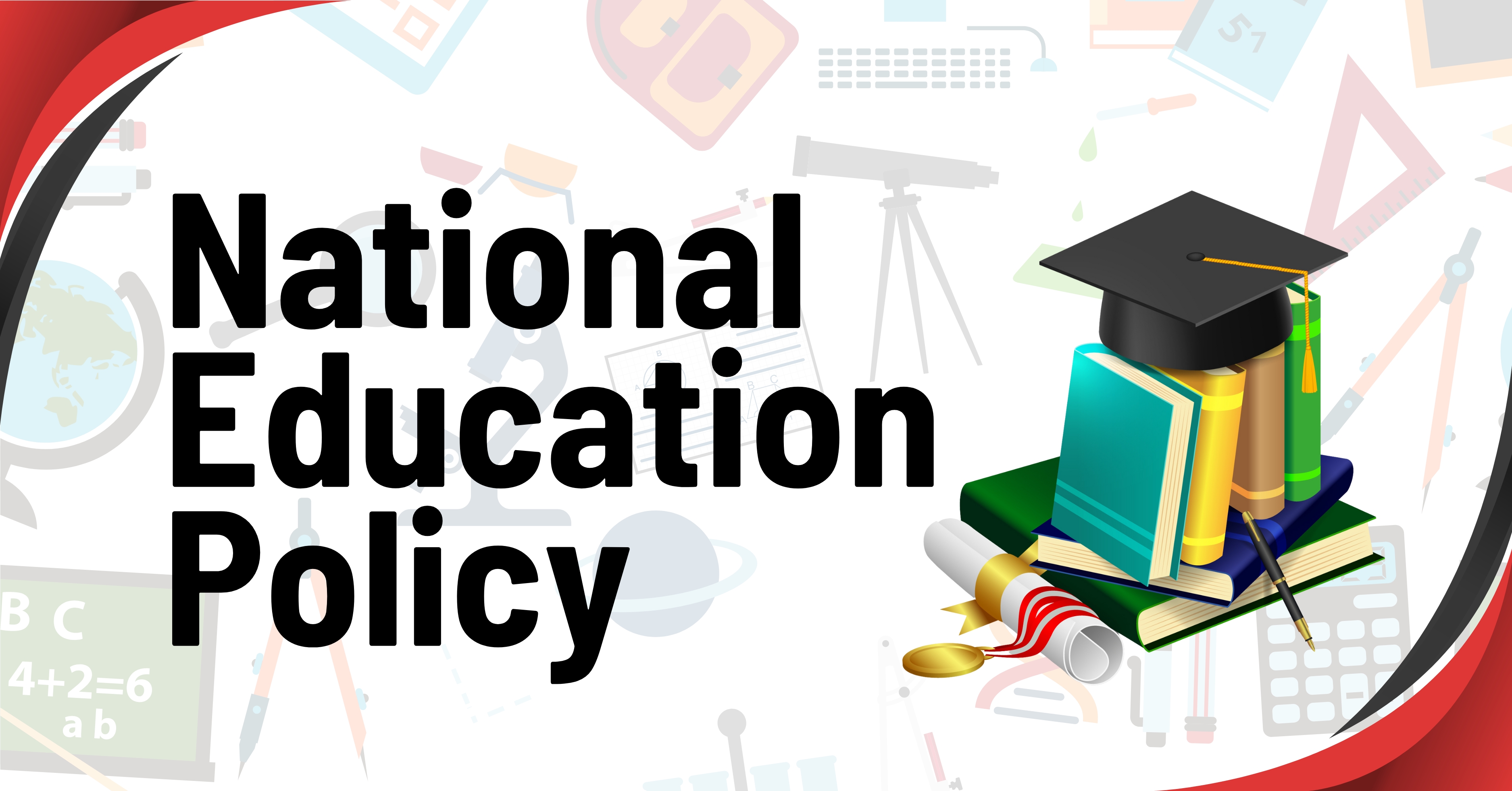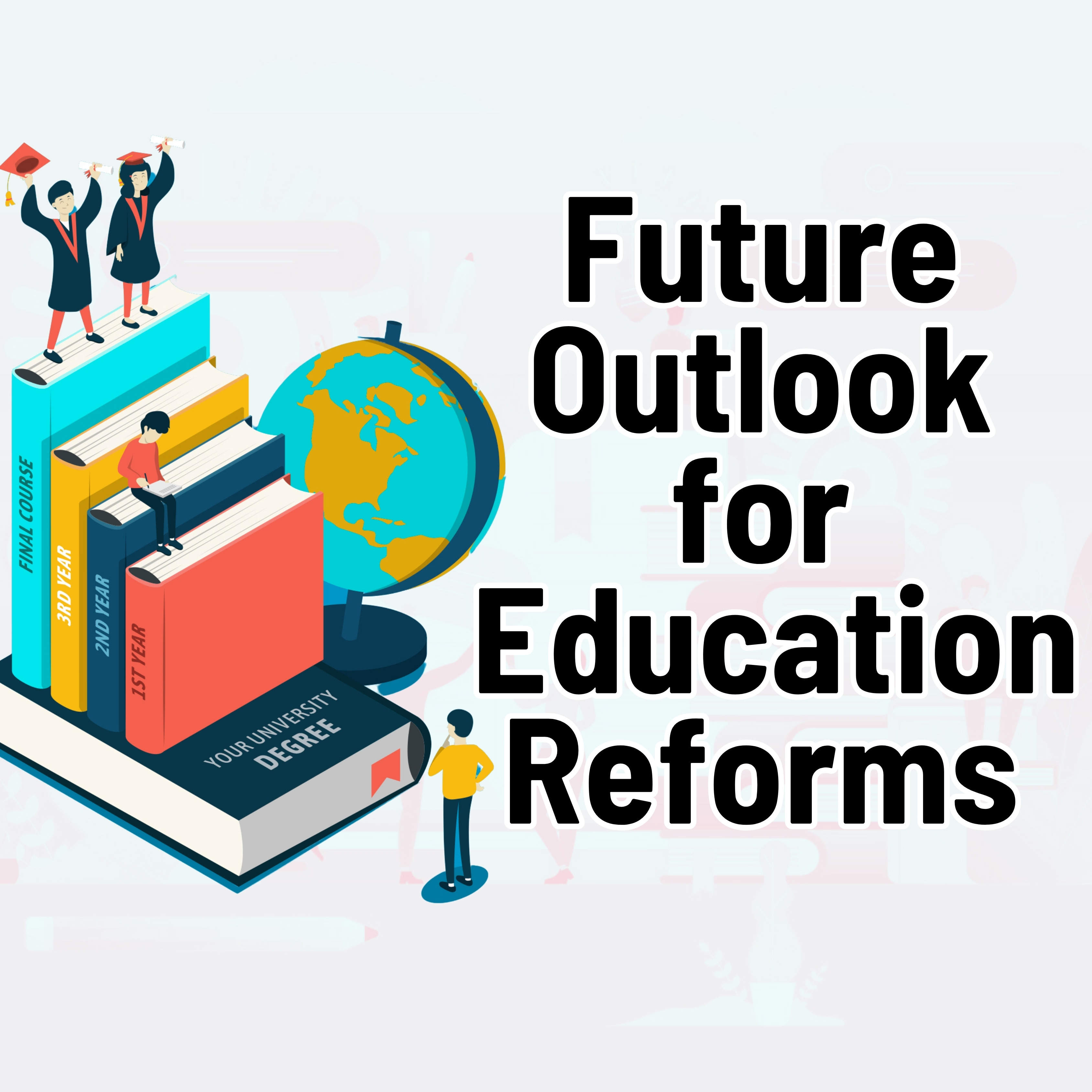
Introduction
The National Education Policy (NEP), which promises to bring in a number of extensive reforms intended to completely change the academic environment, is a major turning point in the area of education. This strategy attempts to close the learning gap between the infrastructure of education today and the demands of students in the twenty-first century, in addition to overhauling the current educational system. Fundamentally, the NEP aims to tackle important aspects of education, including as curricula, methods of instruction, patterns of assessment, and the general role of technology. With an emphasis on adaptability, innovation, and critical thinking, the policy aims to provide students the tools they need to prosper in a world that is changing quickly.
Overview of the National Education Policy.

The National Education Policy (NEP) represents a comprehensive framework aimed at transforming the educational landscape of a country. It's devised to revamp the existing structures and methodologies of education to make them more relevant and impactful in today's rapidly evolving world. The policy seeks to address critical issues and gaps within the education system, aiming for an inclusive, accessible, and improved quality of education for all segments of the population.
Key Components of the Policy

-
Flexibility in Choices:
Offers a range of options for subjects. Enables a variety of learning routes depending on interests
and professional objectives. Additionally, it empowers learners to customize their educational
journey, fostering a more personalized and engaging learning experience. - Development:
Advocates for strict hiring practices for teachers. Provides programs for ongoing professional
development. Strives to uphold superior teaching standards. - Technology Integration:
The process of using technology to improve instruction. Encourages
pupils' digital literacy. Makes use of internet resources to improve accessibility and engagement
of learning. - Updated Evaluation Techniques:
Shifts attention from memorization to thorough evaluation.
Assesses knowledge application, comprehension, and critical thinking abilities.
- The National Education Policy encapsulates several key components designed to overhaul and enhance the educational experience:
- Multidisciplinary and Holistic Approach: promotes an academic climate that is inclusive. places a focus on multidisciplinary education.
Objectives and aims of the policy

-
To promote an educational system with a global perspective and scope that is firmly grounded
in Indian values and culture.
National Education Policy's Effect on Students.
-
Curriculum that Promotes Critical Thinking: An inquiry-based, discovery-oriented learning
environment where students are encouraged to pose questions and look for solutions has been
included into the curriculum. -
Subject Selection Flexibility: By allowing students to select courses from other streams, the
strict science, business, and humanities divides are broken down and a truly interdisciplinary
education is made possible. -
Redefined Assessment Criteria: Rather than focusing on memorization of facts, exams now
measure students' conceptual comprehension and their capacity to apply knowledge in
practical contexts.
Focus on comprehensive development.
-
Extracurricular Activities: In order to create a well-rounded personality, students are encouraged
to engage in a variety of extracurricular and co-curricular activities, such as athletics, the arts,
and community service. -
Life Skills Education: To prepare students for the complexities of modern life, the curriculum
incorporates life skills education, such as ethical reasoning, communication, creativity, and
critical thinking. -
The strategy also encourages teacher training to be conducted on digital platforms, which
increases accessibility and flexibility. -
This form of professional development is advantageous because it guarantees that educators
remain current with the most recent findings in education and instructional strategies. -
Encourages instructors to have a lifelong learning culture. Strengthens educators' capacity to
accommodate a range of learning styles and requirements.
what is needed to meet 21st-century learning challenges and the condition of learning outcomes
today.
Significant improvements in the educational experience of students have been brought about
by the National Education Policy, which focuses on making learning more all-encompassing,
application-based, and supportive of their complete development.
Students may anticipate the following as a result of the recent educational reforms:
In order to guarantee the comprehensive growth of pupils, the National Education Policy
integrates many approaches:
The National Education Policy is a shining example of change, attempting to pave the way for an
inclusive, egalitarian education system that also gives teachers and students the tools they need
to realise their full potential. The strategy seeks to mould a new generation of leaders, innovators,
and thinkers who are prepared to take on the problems of the future through its extensive
changes.
The National Education Policy (NEP) introduces a revolutionary approach to the educational
system that will have a big effect on teachers by creating new opportunities for professional
development and requiring changes to the way that lessons are taught. With these modifications,
the educational environment will be enhanced, a more flexible and inclusive system of
education will be promoted, and teachers will be better prepared to meet the varied needs of
their students.
The NEP's emphasis on teacher professional development opportunities is one of its main tenets.
This realisation is critical because it recognises that student learning results are directly impacted
by the calibre of instruction. Teachers are encouraged to participate in ongoing professional
development through a variety of courses and programmes offered under the NEP, which aim to
improve their knowledge and abilities.
- To guarantee that all children, from preschool to higher education, have access to education at all levels.
- To greatly raise the standard of instruction so that students acquire social and emotional as well as cognitive abilities.
- To close the achievement gap between
Modifications in Teaching Methodologies

-
Among these modifications are the following:
-
Promoting the use of multimedia and technology in the classroom.
-
Fostering cooperative learning via conversations and group projects.
-
Including practical applications of principles to enhance the significance of learning.
Challenges and Criticisms of the National Education Policy
-
Questions regarding the applicability of novel teaching techniques in a variety of contexts.
-
Some institutions' inadequate infrastructure and resources support the suggested modifications.
Issues with grassroots implementation
While the National Education Policy has been welcomed by many as a step towards revitalizing
the Indian educational system, its implementation has not been without challenges. Criticisms
have emerged from various stakeholders, highlighting areas of concern that need to be
addressed to fully realize the policy's potential.
Resistance to change is common, especially when it comes to the extent that the NEP proposes.
There are instructors and institutions that are unwilling to give up on conventional methods
of instruction and evaluation. There have been concerns expressed about whether interactive
and technology-driven teaching approaches can be implemented at all institutions, especially
in underprivileged or rural areas. Two possible causes of resistance are familiarity with
tried-and-true techniques and fear of the new.
The NEP's lofty objectives are beset by formidable obstacles at the local level. A significant
obstacle is the stark differences in infrastructure, teacher preparation, and resource availability
between educational institutions in various geographical areas. For implementation to be
effective, all teachers must have equal access to materials and training, regardless of where they
teach. Sufficient money to guarantee that educational institutions has the essential
infrastructure to implement novel teaching approaches. A well-coordinated, phased strategy to
ease the transfer of educators and institutions to the new system. The National Education Policy
must successfully address these issues and complaints. To overcome these challenges and
realise the NEP's revolutionary potential, stakeholders must be included, resources must be
allocated effectively, and a clear implementation plan is required.
Future Outlook for Education Reforms
The landscape of education is ever-evolving, with rapid technological advancements and the growing importance of inclusivity and diversity. The implementation of the National Education Policy (NEP) represents a significant leap towards addressing these aspects. This policy aims not only to overhaul the existing educational structures but also to instigate a paradigm shift in teaching methodologies, evaluation techniques, and overall learning experiences.

Evolution of the academic landscape
The National Education Policy heralds a new era in the academic domain, promising a shift from rote learning to a more holistic, inquiry-driven, and flexible approach that encourages critical thinking and creativity among students. With a greater emphasis on understanding and application rather than mere memorization, the policy aims to foster a generation of learners equipped to tackle the complexities of the modern world. Moreover, the integration of technology in classrooms, as proposed by the NEP, stands to revolutionize the way education is imparted, making learning more accessible and engaging. This transformation is anticipated to bridge the gap between the educational experiences of urban and rural students, thereby democratizing quality education.
Opportunities for growth and improvement

- Teacher Training and Professional Development: There is a strong emphasis on upskilling teachers to adapt to new teaching methodologies and technologies. This is critical for the effective implementation of the policy.
- Accessible and Inclusive Education: Efforts to make education more inclusive for students from diverse backgrounds, including provisions for differently-abled students, indicate a move towards a more equitable educational system.
- Curriculum Overhaul: The proposed changes in curriculum and assessment methods aim to make education more relevant to the real world and less stressful for students.
- Integration of Vocational Education: Introducing vocational education from a young age aims to equip students with practical skills and prepare them for a dynamic workforce.
The success of these reforms’ hinges on their effective implementation and the continued support from all stakeholders, including government bodies, educational institutions, teachers, parents, and students themselves. As we venture into this new chapter of educational reform, the collective aim should be to nurture a learning environment that is adaptive, inclusive, and conducive to the holistic development of every student.

-
A more adaptable and comprehensive curriculum that provides a broad range of academics
and skill-based training would be beneficial to students. -
Instructors are urged to abandon conventional pedagogical techniques in favour of more creative
and all-encompassing teaching strategies.
towards more innovative and participatory techniques that prioritize lifelong learning and
professional growth.
The success of the NEP will ultimately depend on its implementation at the ground level, requiring
consistent effort from all stakeholders involved, including policymakers, educational institutions,
teachers, students, and parents. The goal is clear: to create a more inclusive, practical, and
high-quality educational system that caters to the diverse needs of the Indian population. If
executed effectively, the National Education Policy has the potential to transform the academic
landscape, making it more vibrant, diverse, and equipped to face future challenges.









